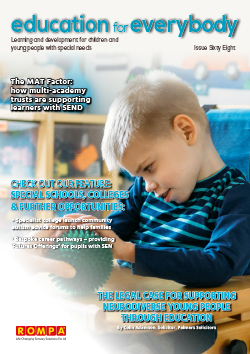The generation that has never lived life without the internet and easy access to a computer, Gen Z-ers grew up during the ultimate period of digital transformation. They’re now students and pupils and whether it’s school, college or university, WiFi has changed the game of education for them like no other generation has experienced.
From home-learning being more accessible than ever before to research being easy to do without even leaving their bed, education has been accelerated into overdrive with the handiness that is WiFi.
It doesn’t just relate to learning either, but their mental health, their unique needs and ultimately their happiness. After all, they often spend the majority of their waking hours in the learning environment.
Sharing is Caring
The word to “share†has become just as much a verb – to do something – as it has an adjective. Sharing is fundamental to the way we learn – sharing ideas, sharing files and even sharing mobile hotspots. At university for example, one presentation can be sent to a group who are working on a project, and everyone can edit, comment and share inputs into the document in real-time with full visibility from everyone else. Say goodbye to the person who always bails on meeting for group projects!
Mental Health
One in ten children aged between five and 16 have mental health problems. Social media has been flagged up for contributing to mental health problems, but the internet is also one of the main parties helping to tackle the stigma and encourage conversation. Mental health apps in general have exploded in the past few years as the mindfulness conversation goes into full swing. From DreamyKid, which helps children to meditate, to Kids Yoga Deck and Breathing Bubbles which helps them with releasing their worries, there is an app for everything. With so many pupils using iPads at school, it is worth teachers setting aside an hour a week for these important apps.

ConcentrationÂ
We all know that kids can get distracted easily – we all can. The internet can, of course, be one of the main culprits of distraction and procrastination, but that doesn’t mean it should be banished. It can also bring opportunity to help people to focus. Apps like Forest encourage you to focus, and if they don’t touch their phone while doing their homework they grow tree after tree.Â
The Luxury of Choice
There are now far more opportunities for geographically isolated or underprivileged students, ones which can help them to thrive. If they have access to WiFi at home, they can take advantage of Skype language lessons, online training courses, or simply classes being posted online for free. The internet can help more students than ever before to get an education, no matter where they are. If you want to learn about something but can’t afford the hefty tuition fee, the internet can give you a crash course in it through forums, search engines and an abundance of free resources. Self-education is thriving, and universities are taking advantage of this through the online courses. It means that there is still the importance of going to university for careers guidance, networking and life skills, but you also have the freedom to learn no matter where.
Virtual Reality & Personalised Learning
We are built to socialise and talk to people, learn from our peers and collaborate. So where does online learning and the luxury of choice come in there? Step forward, virtual reality. By being co-located in a classroom with their peers, once it is in place it will be one step ahead of the normal “online schools†and will take online learning into overdrive. It also means that younger children will be able to access personalised learning through a virtual reality setting, with AI teachers catered to their specific skills. Who knows, maybe one day information will be uploaded directly into our brains…
Special Needs are Better Catered for
Approximately 15% of the world’s population – or one billion people – have some form of disability. For teachers, having a one-size-fits-all approach to learning is not, and has never been possible, but they have had to make do with limited resources. With new developments, people with special needs can thrive in a way that they never previously have. Assistive technologies like electronic worksheets for dyslexics, phonetic spelling software and virtual social interaction learning for autistic students, technology has helped them to overcome many learning difficulties.
Learning websites like BBC Bitesize have helped students learn for more than a decade, but education now has a new meaning. WiFi and digital mean students can work on the other side of the world from each other and be connected, and a good WiFi solution should never be compromised. If an education institution has poor or underperforming WiFi, it no longer means that people can’t just access websites. WiFi within education truly enables students to reach a wealth of up to the minute information, share information and collaborate. Most importantly, it allows the institutions to adapt to learner needs and embrace the latest educational resources.
By Will Evans, Director at Performance Networks






